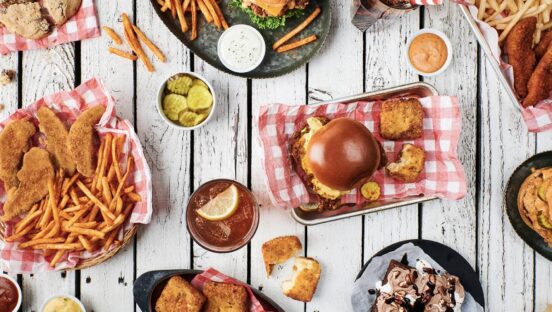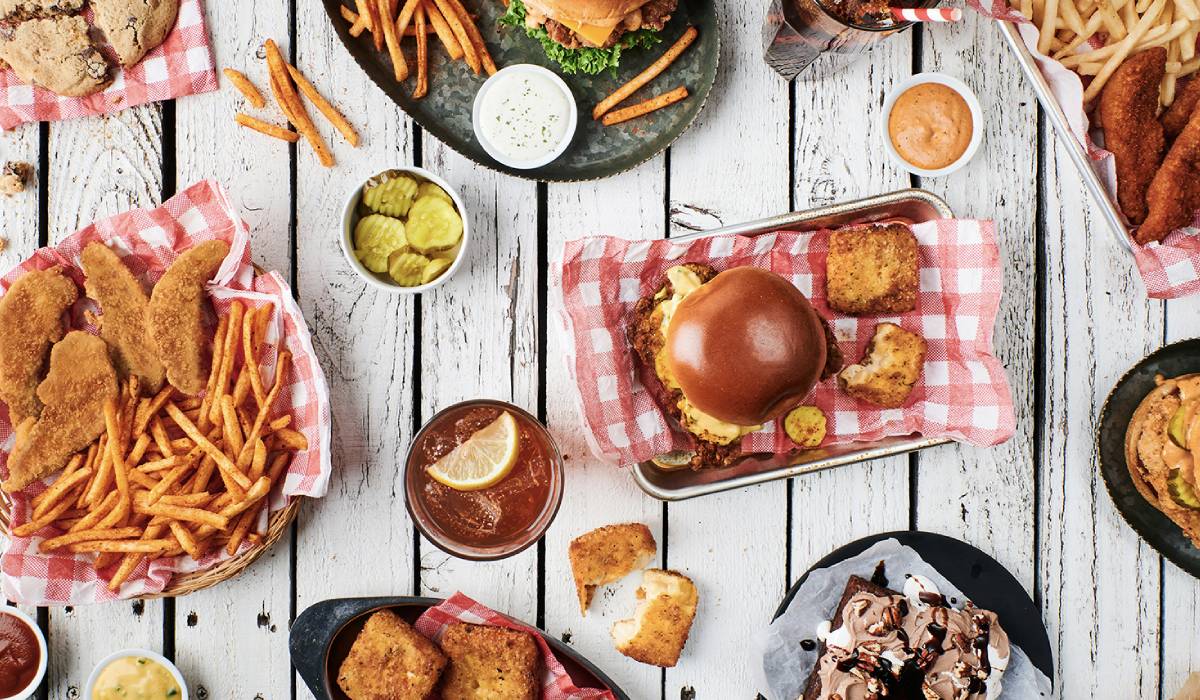We are hearing a lot of buzz about what is really going on with the off-premises restaurant business. It’s impacting every part of the industry from old school operators to venture funded startups and from brick and mortar brands and virtual brands. All in all, off-premises is in a phase of enormous transition and exciting opportunity. Here are a few bold predictions for this fast-evolving segment.
On-Prem? Off-Prem? It’s now Omni-Prem
Until very recently, there had been a clear line in the sand for restaurant operators—the business you do on your premises and the business you do off your premises. The majority of the operators’ teams focused on the on-premises business and a small, but mighty team drove the emerging off-premises initiatives. Now with the proliferation and mass adoption of restaurant access via delivery applications, first party applications, new delivery methods and more—the restaurant experience is shifting into a new phase of omni-prem.
No longer can restaurant operators separate on- and off-premises initiatives because from a consumer standpoint, all these different experiences are expected touchpoints of your brand. With this amalgamation of experiences, restaurant operators now need to think how they can perpetuate an exceptional, memorable, and consistent brand experience across all of these channels. Done right, this can really separate a restaurant from the competition (evidenced by operators like Chipotle who have 40% of their sales coming via digital sales) done wrong, your whole restaurant experience can be ruined.
Restaurant Tech Triage
With the new normal being omni-prem access of restaurants, the world of food, and technology continue to collide in unprecedented ways. One current issue we face is the ever-changing and hard-to-predict barrage of food service challenges (COVID confusion, inflation, labor shortages, etc.). Meanwhile technology in restaurants has primarily been implemented reactively, to fix holes in the dam, versus proactively to enhance the brand experience.
It started with delivery. In 2018 and even into 2019, lots of operators were dabbling in delivery but did not see it as a core function of their business. Then the pandemic hit and it was an intense race to implement delivery solutions to try to stay afloat.
Now, with labor difficulties and sky-high inflation, restaurants are trying to quickly implement and test more innovative and, dare I say, avant-garde robotic solutions to help save on labor costs and get ahead of what is shaping up to be a perpetual problem with restaurants (getting people to actually cook the food).
Despite the reactive nature of implementing technologic solutions inside brick and mortar operations, it does seem there is a light at the end of this triage tunnel. Many food service operators are now implementing their own product and technology roadmaps to ensure the solutions they bring forward are well thought out, planned and ultimately helping to perpetuate an amazing omni-premises experience.
Third Party Versus First Party?
Do restaurants want to fulfill orders through Uber Eats, DoorDash, and Grubhub? This answer is now convoluted post-pandemic, but, currently, restaurants understand these apps have immense user bases and they must be part of this third-party delivery explosion. While it is very clear today that having both third party and first party digital experiences is essential to building pickup and delivery businesses, restaurants will be seeking new ways to get their customers back to purchasing directly from their owned channels.
Don’t be surprised if in the next year or two, there is a gigantic push from foodservice operators to implement very innovative and interesting guest experience programs to try to incentivize their customers to order from their owned channels. Also, look out for these same restaurants to have virtual restaurant programs to continue to capture the attractive consumers that are loyal to third-party delivery apps.
The Virtual Honeymoon is Over
Virtual restaurants as a whole are here to stay, but very few virtual concepts will last until death do us part. And that is actually good for the business overall. With the explosion of demand for delivery, many restaurants quickly entered the virtual space. Why? Virtual has low barriers to entry and it was an easy way to capitalize on the huge influx of demand that flooded third-party delivery apps.
But now, as growth for delivery stabilizes and consumers start to establish routines and behaviors on these apps, there will be high hurdles to overcome to truly be successful. For virtual brands to actually succeed they have to have large, dedicated teams creating a craveable guest experience from discovery to ordering, and then repeat.
Don’t be surprised if in the next few years there are a few mega-virtual chains that consumers love just as much as their favorite brick and mortar restaurants. As Nextbite’s CEO Alex Canter has been quoted, “The next McDonald’s could be a virtual restaurant chain.”
It is Still all About the Food
“Chipotle is not a technology company that sells food. They are a food and people company super-charged by technology.” When I first heard this quote at a conference presentation, my eyes rolled, but then as I really thought about it, it is a profound and impactful statement and proves why an operator like Chipotle is succeeding in this new era of foodservice. They have updated their approaches to ensure great access to their brand, but ultimately their focus is still on making exceptional food.
So, as we continue to become enamored with the amazing intersection of food and technology, restaurants and the interwebs, and more, we have to remember, exceptional food is still, and will continue to be, the most important part of an exceptional omni-premises strategy.
With more than 15 years in the restaurant industry, starting as a waiter at a local mom and pop Colorado restaurant, then moving into innovation and advertising with large restaurant chains and multi-national CPG companies, Mickey Citarella understands all facets of the business. Today, he heads the brand team of Nextbite, a leader and innovator in virtual restaurants. Throughout his career, Mickey has focused on elevating national and international brands and companies through business strategy, consumer insights and integrated marketing communications (traditional media, digital media, social media, PR, and creative) to drive demand for brands including Hershey, McDonald’s, Chipotle, California Almonds, Qdoba, Subway, and MillerCoors. He can be reached at mickey.citarella@nextbite.io.










